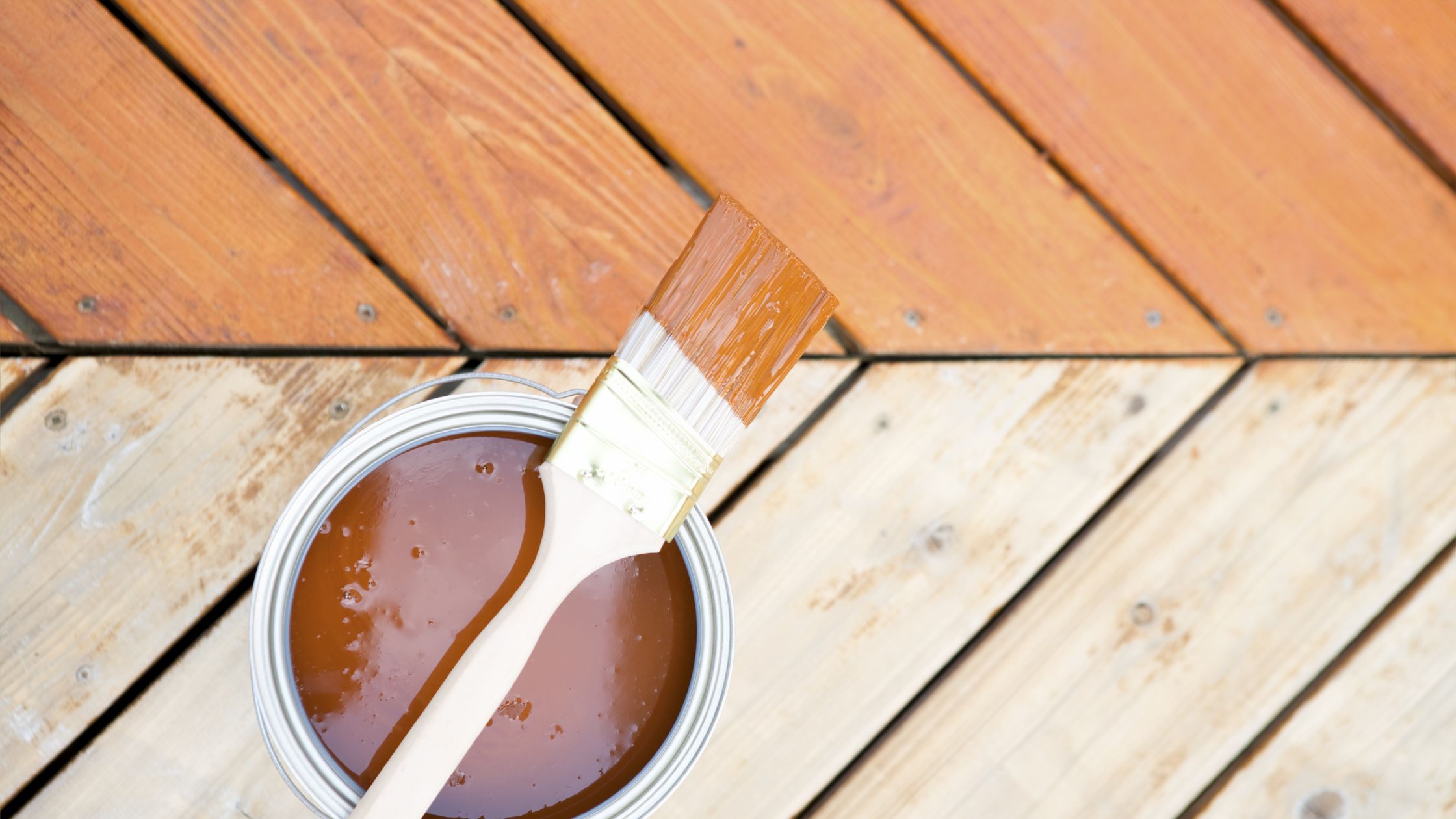
Why We Brush and Roll Decks Instead of Spraying
Spraying deck stain might look fast, but it rarely gives a lasting finish. That’s why we always back-brush or roll after spraying — or skip the sprayer altogether — to make sure stain penetrates, not just sits on top. It takes longer, but the results last much longer too.
Why We Brush and Roll (Not Just Spray) for a Lasting Finish
You’ve probably seen videos of someone spraying stain across an entire deck in minutes — and it looks so easy. But when we show up to re-stain those same decks a year later, it’s often because the quick spray didn’t hold up.
At Colin Can Help, we use a brush-and-roll method because it gives your deck the longest-lasting protection — and avoids common mistakes that lead to early failure. Here’s why that matters, whether you’re hiring us or tackling the project yourself.
🎯 The Problem with “Spray and Walk Away”
Sprayers have their place in deck staining — especially for railings, spindles, and tight spaces. But spraying alone leaves you with problems:
❌ Uneven coverage
Sprayers often lay stain on the surface rather than pushing it into the wood grain, which leads to thin spots and inconsistent protection.
❌ Poor absorption
Without brushing or rolling, stain can sit like a film on top. That makes it vulnerable to peeling, especially after rain or snow.
❌ Over-application
Spraying makes it easy to apply too much stain in one area and not enough in another. Heavy areas stay tacky, light areas fade early.
❌ Wasted product
More stain ends up in the air (and on nearby surfaces) than on the wood. This leads to higher material costs and a messier site.
⚠️ Heads up: Inexperienced sprayers also risk coating plants, siding, windows, or nearby cars — a common reason we get called to fix DIY jobs.
✅ Why Brushing and Rolling Works Better
We may use a sprayer to speed up coverage, especially on railings, but we always back-brush or roll to ensure quality. On flat surfaces, we often skip the sprayer altogether for better control.
Here’s why our method lasts longer:
✔️ It pushes stain into the grain
Brushing and rolling forces the stain deep into the wood’s pores, which helps it bond properly — especially with semi-transparent and oil-based stains.
✔️ Better color consistency
Manual application blends sections together, avoids lap marks, and gives a rich, even tone across the entire deck.
✔️ Less waste, more control
Rolling and brushing let us apply exactly the right amount in each area — not too much, not too little.
✔️ Helps identify problem spots
As we work, we can feel rough boards, spot water damage, or areas that need sanding or caulking. Spray-only methods skip over those details.
🧪 Our Real-World Results
We’ve tested every method: spraying only, rolling only, brushing only, and every combo in between.
The spray-only jobs? They look great on day one… but fade, peel, or fail within a year or two — especially in high sun or moisture zones.
The brush-and-roll method? Our clients routinely go 3–5 years between stains when using solid or semi-solid products, with better color retention and protection across all seasons.
🛠️ Case Example:
We re-stained a spray-only deck in University Heights that was peeling after just 18 months. After sanding and back-brushing with a semi-solid stain, that same deck has held up through three winters and counting.
🧰 When (and Where) We Still Use Sprayers
We’re not anti-sprayer — we just know when it helps and when it hurts. Here’s how we use them:
👍 Ideal For:
- Vertical surfaces like spindles and railings
- Hard-to-reach corners
- Light top-up coats when back-brushed immediately
🚫 Not Ideal For:
- Deck floors, steps, or areas with high foot traffic
- Older, dry wood that needs deep absorption
- Detailed edge work where control matters
Even when we use a sprayer, it’s always paired with rolling or brushing immediately after — the stain shouldn’t have a chance to dry on the surface before it’s worked in.
⏱️ It Takes Longer, But It’s Worth It
Brushing and rolling takes more time, more effort, and more care — but it saves you money in the long run:
- Fewer callbacks for peeling or premature fading
- Longer stain life, especially with premium products
- No overspray messes on siding, windows, or gardens
- Cleaner lines and better coverage around trim and edges
💬 We tell customers all the time: “You only get to skip steps for about a year… and then you’re doing it all again.”
🧠 FAQ
Q: Will brushing and rolling work with all stain types?
Yes — in fact, it’s recommended for semi-transparent, semi-solid, and solid stains. Clear sealers can be sprayed more easily, but still benefit from back-brushing.
Q: Doesn’t brushing take forever?
It adds time, but not as much as you think — and it avoids the time and cost of having to re-do the job a year later.
Q: Can I spray and then roll just the flat parts?
Yes — this “spray and back-roll” combo is common and effective. But for best results, keep a wet edge and don’t let stain dry before rolling.
Q: How can I tell if stain was applied properly?
Water should bead on the surface, color should look even, and the finish should feel dry (not tacky) after curing. If you’re unsure, we can take a look.
Q: Will a brush/roller finish look better than spray?
Usually, yes. You’ll get richer color, fewer lap lines, and less overspray — especially on older decks with character in the grain.




No Comments
Sorry, the comment form is closed at this time.